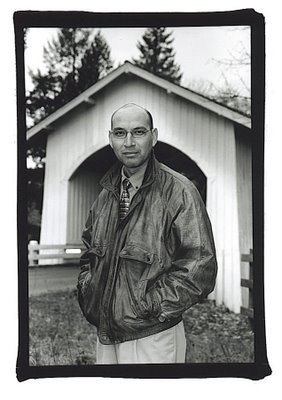Reflection and Texture
 I'm a career photographer who loves to fly fish. A few years ago, I realized the most creative and personal way to express my passion for this sport was through my work, and so, the photo essay/book project, Fly Fishing Oregon in Black and White, was born.
I'm a career photographer who loves to fly fish. A few years ago, I realized the most creative and personal way to express my passion for this sport was through my work, and so, the photo essay/book project, Fly Fishing Oregon in Black and White, was born.My idea was simple: to document a full season of Oregon fly fishing using 100 black and white full-frame photographs. The challenge came in creating an enlightening and thought-provoking collection of images from essentially a singular subject--but that is where the 15 Elements of Composition offered invaluable assistance.

During preliminary planning, I identified two techniques that fit the project perfectly: Reflection and Texture. These elements presented applications for both the artificial and natural components of the story, plus contributed information and provided diversity among the photographs.

For reflection, I chose two dissimilar subjects: an anxious angler rigging up caught in my pick-up truck's rear view mirror, and a bank of clouds and jagged treeline shimmering in a lake's rippled surface. Texture was displayed in a Ponderosa pine tree's jigsaw puzzle-like bark, and in the glow of water droplets resting on my polished fly reel.
 When employed appropriately and for the proper effect, reflection and texture open photographic boundaries and extend visual opportunities limited only by the imagination.
When employed appropriately and for the proper effect, reflection and texture open photographic boundaries and extend visual opportunities limited only by the imagination.
Am I a reflection of my film or is my film a reflection of me? -Kevin Russo


0 Comments:
Post a Comment
<< Home